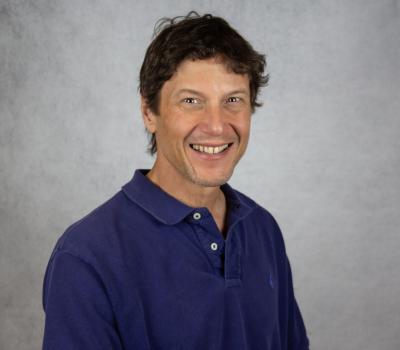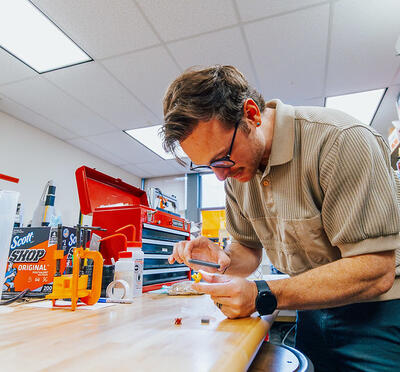In the evolving landscape of semiconductor research, atomic layer deposition has emerged as a touchstone for innovation. A thin film deposition technique, in which chemical precursors interact with surfaces in a controlled fashion, ALD enables precise, layer-by-layer assembly of materials at the atomic scale. ALD is experiencing groundbreaking advancements at Oregon State University, where researchers are not only refining traditional ALD techniques but also working to expand applications. A strong depth of expertise, complemented by Oregon State's open-access facilities, serves as a valuable resource for collaborative efforts with industry partners. This article will delve into these current collaborations, focusing on both the modernization of traditional ALD methods and the exciting possibilities artificial intelligence presents in the field.
Unpacking ALD
In the intricate world of semiconductor research, atomic layer deposition stands out. ALD can be explained simply as a vapor phase technique where the film is grown in a self-limiting way, one atomic layer at a time. It allows for deposition of pinhole-free films with extremely precise control of composition. This method enables the engineering of complex nanolaminate materials by depositing atomic or molecular layers of different materials in a sequential manner.
ALD has been widely adopted in advanced integrated circuit manufacturing, since it allows for an unparalleled level of precision and control at the nanoscale, proving indispensable for the manufacturing of advanced integrated circuits as well as for applications in catalysis, batteries, energy harvesting, protective coatings, medicine and healthcare, etc. The beauty of ALD lies in its ability to produce uniform and conformal films, addressing the exacting demands of the field. The semiconductor industry’s requirement for increasingly precise control as it tackles finer geometries ensures a deepening dependence on ALD.
John Conley, a professor of electrical and computer engineering at Oregon State University and director of the Materials Synthesis and Characterization Facility, has decades of experience in materials science.
"The potential of ALD is not just in shaping semiconductor innovations, but in its broader reach into diverse interdisciplinary projects," Conley said.
As an example of this reach, Conley has used ALD to help create a prototype of an artificial pancreas. While this project highlights the technique’s adaptability, it is only one in Conley's extensive research portfolio. His more recent endeavors have further expanded the horizons of ALD applications.
"We continue to uncover new possibilities of what ALD can achieve," Conley said.
Current ALD research at Oregon State
One of the most innovative ALD projects in motion at Oregon State involves microwave-enhanced ALD. In collaboration with MKS Instruments and ASM, the Oregon State team is tackling some of the inherent limitations of traditional ALD methods. The goal is innovative: to use in-situ microwave exposure to improve material properties of ALD films. One advantage of ALD is the relatively low temperatures at which it can be performed. However, because temperatures are low, conventional ALD processes can leave unreacted ligands in the films, degrading material performance. Typically, high-temperature post-deposition annealing is used to remove these, but this is only viable in some applications.
"In microelectronics, you typically cannot exceed about 400 C, and in flexible displays, you cannot go above 200 C," Conley said. The microwave-enhanced ALD aims to address this by enabling low-temperature in situ anneals to remove defects more effectively. "The microwaves may have a more direct interaction with the defects and impurities so as to avoid heating the entire wafer," Conley said.
The research aims to directly impact the microelectronics industry, particularly in developing materials for gate dielectrics used in CMOS devices. Despite pandemic-related delays, Conley remains enthusiastic about the potential of this research to revolutionize thin film deposition methods and their applications.
Artificial intelligence in materials science
The integration of artificial intelligence into various research domains is revolutionizing traditional methodologies, and the realm of materials science is no exception. At Oregon State, the convergence of AI and materials science promises a transformative future where research, discovery, and application are redefined through machine learning and data analytics.
While AI's inclusion is still building in this domain, its potential must be recognized. The technology can, for instance, significantly expedite the process of discovering new materials or enhance the precision of atomic-level characterizations. It may soon empower scientists to anticipate material behaviors under diverse conditions, allowing for more efficient and targeted research.
Conley is optimistic about this integration.
"In many ways, AI could be like having an incredibly intuitive research assistant that can sift through vast datasets, recognize patterns we might miss, and even suggest novel avenues of inquiry,” he said. “It will likely reshape how we approach materials science, making it more predictive and, hopefully, more productive."
However, as with any technological integration, there are challenges to navigate. Balancing human intuition with algorithmic insights and ensuring data integrity of AI in research are among the many complex issues researchers must grapple with.
Nonetheless, the forward momentum is palpable. As Oregon State continues to be at the forefront of materials science innovation, the synergy of AI with traditional research methodologies hints at an exciting, dynamic future.
Setting Oregon State apart in semiconductor research
In a broader sense, beyond ALD, Oregon State has established itself as a key player in the semiconductor world. What truly sets the university apart is the quality of its semiconductor program and the rich ecosystem it has cultivated around it. Oregon State champions a culture of multidisciplinary collaboration, which gives rise to ideas that emerge along the lines between traditional academic departments.
When you bring together physicists, chemists, and engineers on a project, you are not just combining their individual expertise,” Conley said. “You are creating a potent mix that often leads to unexpected and innovative solutions."
This collaborative spirit fosters academic excellence and draws interest from industry giants keen on tapping into the innovations that emerge. Oregon State's undeniable appeal to the semiconductor industry lies in the synergistic relationship the university has cultivated with it. It's a two-way street. While industry players gain access to the latest research and the brightest minds, the university benefits from industry insights and technology goals and challenges, ensuring its research remains relevant and cutting-edge.
"Industry's interest in Oregon State is a testament to our program's relevance,” Conley said. “They find value in working with Oregon State, and they want to be a part of our expanding future."
Elaborating on what attracted him to Oregon State, Conley draws a compelling parallel to his earlier career stint at the Jet Propulsion Laboratory.
The deep dedication and the spirit of cross-departmental collaboration that I witnessed at JPL closely mirror the environment at Oregon State," he said.
Bridging academia and industry
At Oregon State's semiconductor program, the emphasis is not merely on training the next generation of professionals but also on firmly advancing the field of semiconductor technology. Nearing a major research milestone in microwave-enhanced ALD is a great example of such progress, embodying the program's mission.
The forthcoming Jen-Hsun and Lori Huang Collaborative Innovation Complex, set to open in 2025, will add another layer of allure for industry as well as startups. The complex’s shared-access facilities, equipment, and technical support will create a unique platform for new collaborations. Such collaborations will prove beneficial for academia and industry alike. They will provide a fast track for research breakthroughs to real-world applications and ensure that students are trained in skills directly relevant to current industry needs.
In this promising landscape, the work on atomic layer deposition stands as a powerful example of what can be achieved when academia and industry unite. Integrating the exciting advances that AI affords materials science will open even greater possibilities and ensure continued progress.
To explore collaborative opportunities, or the semiconductor program in general, get in touch with us at: semi-osu@oregonstate.edu.




